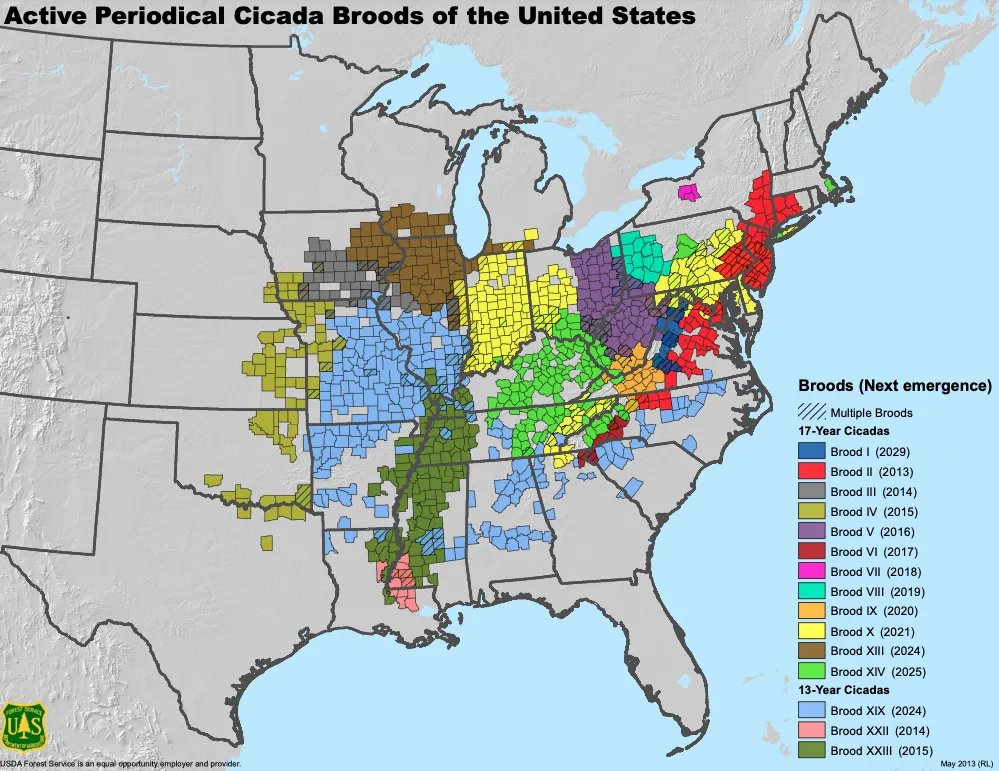Last month the news was buzzing about the rare emergence of a species of periodical cicadas seen once every 17 years called Brood X. From the National Audubon Society:
“The last time they saw the light of day, George W. Bush was president, atmospheric carbon dioxide measured 377 parts per million, and this year’s high school graduates wore diapers. For 17 years Brood X cicadas have tunneled deep in U.S. soils and fed on sap drawn through tree roots. Slowly the nymphs grew in the dark until May, when billions emerged above ground for the last stretch of their lifecycle: a short-lived cacophony of song, mating, and, finally, death. The sudden surge in biomass supplies food to birds, fertilizer for soils, and a rare chance for scientists and the public to witness a phenomenon unmatched in the natural world.”

Photo by Pmjacoby, CC BY-SA 3.0 <https://creativecommons.org/licenses/by-sa/3.0>, via Wikimedia Commons
Over the next 6 weeks, Brood X emerged across the east coast of the United States, mated, and died. In order to mate before dying, male cicadas produce a distinctive clicking noise to attract partners, often reaching decibel levels comparable that to live concerts. You can listen to their raucous mating call here: https://www.youtube.com/watch?v=9f_ztTlZV58.

Map courtesy Liebhold, A. M., Bohne, M. J., and R. L. Lilja. 2013. Active Periodical Cicada Broods of the United States. USDA Forest Service Northern Research Station, Northeastern Area State and Private Forestry.
Brood X could be heard loud and clear in North Georgia this summer, but if you missed their performance have no fear! According to this map created by the USDA Forest Service, a 13-year periodical cicada variety called Brood XIX will return to the Atlanta region in 2024… Get your lawn chairs and earplugs ready!

